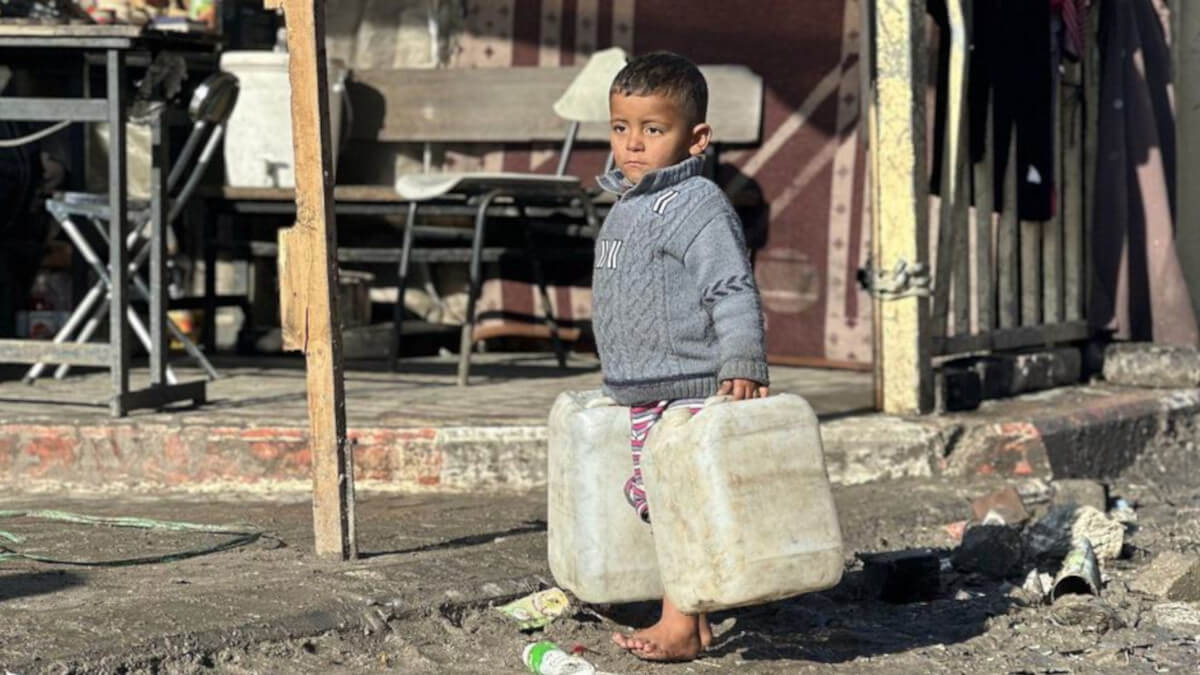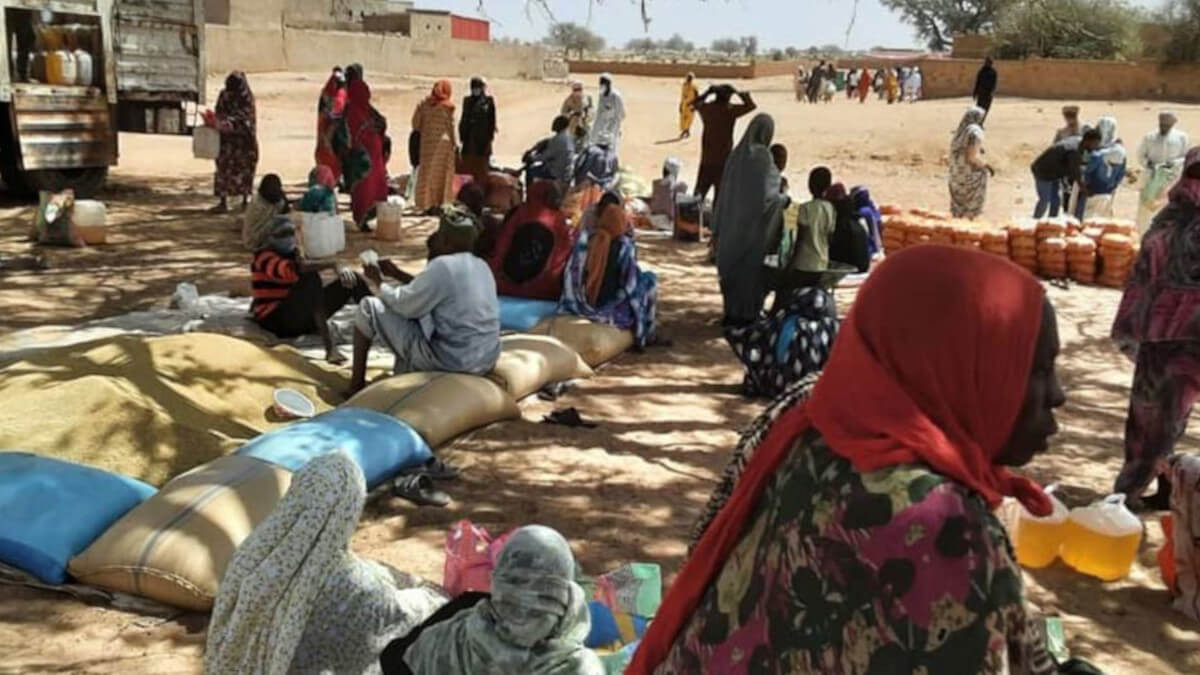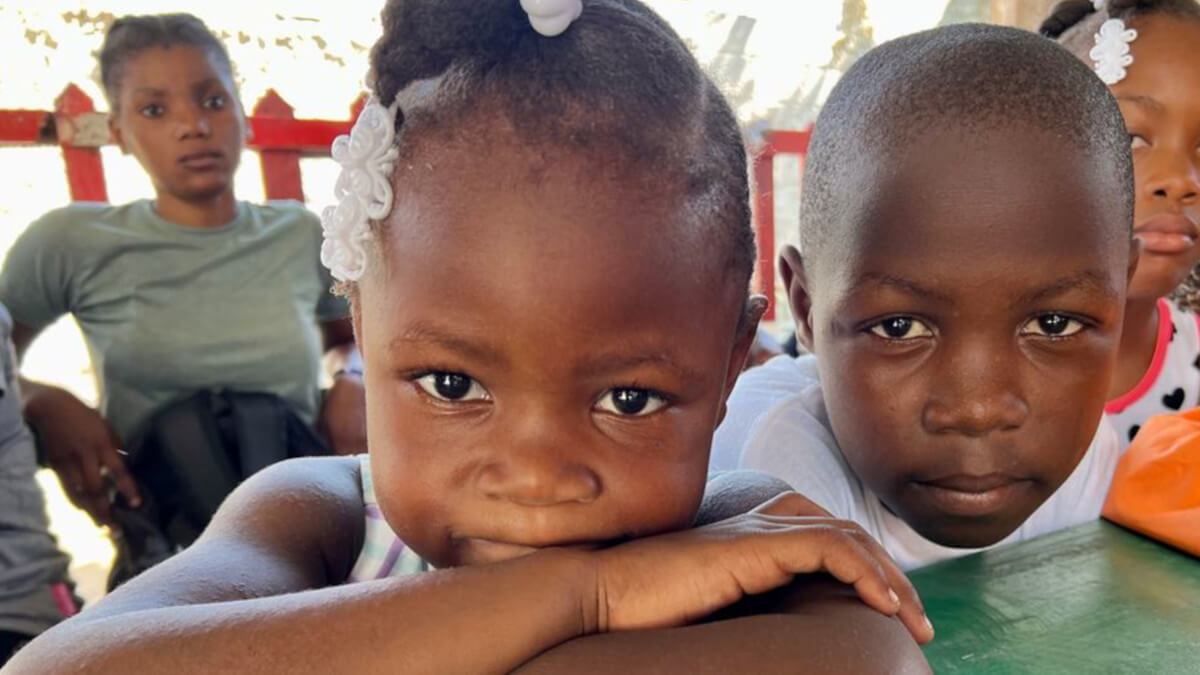Hunger is spreading in the world, affecting 20% of the population in 59 countries

Acute hunger will reach more than 280 million people in 59 countries and territories by 2023, marking five years of deteriorating food insecurity, warns the latest UN report on the issue, which warns of the risk of famine in Gaza and Sudan.
Some 281.6 million people suffered from acute hunger in 2023, according to the World Food Crisis Report released Wednesday, which reports that more than 20 per cent of the population in 59 countries suffered from acute hunger.
The joint study by the UN Food and Agriculture Organization (FAO), the World Food Programme (WFP) and the United Nations Children's Fund (UNICEF) highlights that last year was the fifth consecutive year of advancing food insecurity and warns of the high risk of widespread famine and death in Gaza and Sudan.
The document explains that, while the global percentage of dangerously food insecure people in 2023 appears to have been 1.2% lower than in 2022, the problem has worsened dangerously since the crisis resulting from the COVID 19 pandemic.
It adds that by the end of 2019, when the first case of the disease was reported, acute food insecurity affected one in six people in 55 countries, while just one year later that figure had risen to one in five.
Triggers of hunger crises
The text identifies three major drivers of hunger crises: conflicts, which plague 20 countries and leave 135 million people hungry; extreme weather events, which are responsible for the hunger of some 57 million people; and economic shocks that cause hunger for 75 million people in 18 countries.
Women and children bear the brunt of the hunger crises, with more than 36 million under-fives severely malnourished in 32 countries, according to UN agencies.
The report says acute malnutrition worsened in 2023, especially among people displaced by conflict and disasters. For this reason, it calls for strategies that integrate peace, prevention and development action with emergency humanitarian work at scale to break the cycle of acute hunger "that remains at unacceptably high levels".
Upon learning of the publication, the UN Secretary-General said it was a crisis that "demands an urgent response".
"It will be vital to use the data in this report to transform food systems and address the underlying causes of food insecurity and malnutrition," said António Guterres.

Gaza will face famine any day now
Among the most serious food crises, the agencies highlight the cases of Gaza and Sudan, "where people are clearly starving," according to Gian Carlo Cirri, WFP director in Geneva, speaking to reporters.
The assertion reinforces repeated assessments by a number of food insecurity experts who have warned that famine in the northern part of the Israeli-occupied Palestinian territory will occur "any time" between now and May 2024.
After nearly seven months of Israeli bombardment, "people are unable to meet even the most basic food needs and have exhausted all survival resources, such as eating animal fodder, begging and selling their belongings to buy food. Most of the time, people are destitute and clearly some are starving," Cirri said.
"Every day we are getting closer to a famine situation. Malnutrition among children is spreading. We estimate that 30 per cent of children under two are acutely malnourished or wasted and that 70 per cent of the population in the north faces catastrophic hunger. There is reasonable evidence that all three famine thresholds (food insecurity, malnutrition and mortality) will be exceeded in the next six weeks," he added.
Cirri stressed that the only way to stop the famine is to guarantee daily food deliveries at very short notice.
He added that there has been talk of the need to rebuild livelihoods, address root causes and so on. "But, in the immediate term, we need to significantly increase food supplies. This means deploying massive and consistent food assistance in conditions that allow humanitarian staff and supplies to move freely and people to safely access aid."

Sudan is home to the largest number of hungry people
Sudan is the other major hunger hotspot highlighted in the report as 42 per cent of its population, 20.3 million people, lacked food for minimum nutrition last year following the outbreak of conflict in April, making the African nation home to the largest number of individuals at emergency levels of acute food insecurity.
The report calls for immediate humanitarian assistance to be allowed in throughout Sudan to prevent further deterioration of the situation.
Such assistance would include agricultural inputs as the planting season is due to start in a few weeks in a country where most people depend on agriculture for their livelihoods.
UN agencies also report that the populations of South Sudan, Burkina Faso, Somalia and Mali may also have suffered the worst levels of food insecurity by 2023, although they do not have the data to say for sure.

Latin America
In Latin America and the Caribbean, 19.7 million people faced high levels of food insecurity in nine countries in 2023. Colombia, Dominican Republic, Ecuador, El Salvador, Guatemala, Haiti, Honduras, Nicaragua and Peru make up the list of nations in question. Hungry people in Colombia, Peru and Ecuador include migrants and refugees living in their territory.
The report details that extreme weather events were one of the most important factors that in 2022, due to El Niño, led to erratic and reduced rainfall, higher than normal temperatures and reduced crop yields in parts of Guatemala, Honduras and the Dry Corridor of El Salvador and Nicaragua.
Moreover, reduced income opportunities and higher food prices eroded the purchasing power of families in the region, especially among large migrant and refugee populations, who typically face integration challenges and rely on daily wages from the informal sector.
In terms of conflict, the report specifies that, in Haiti, gang violence in urban areas disrupted markets and the movement of people and goods, severely hampering economic activity and the provision of basic services. This resulted in poor market supply and shortages of essential commodities, including fuel, leading to sharp increases in food prices.
2024 found Haiti in the worst food situation in the region, with a worse crisis than projected in August 2023 linked to escalating gang violence.
For the Dominican Republic and Guatemala, the report projects an improvement this year thanks to greater food availability and increased household purchasing power.








